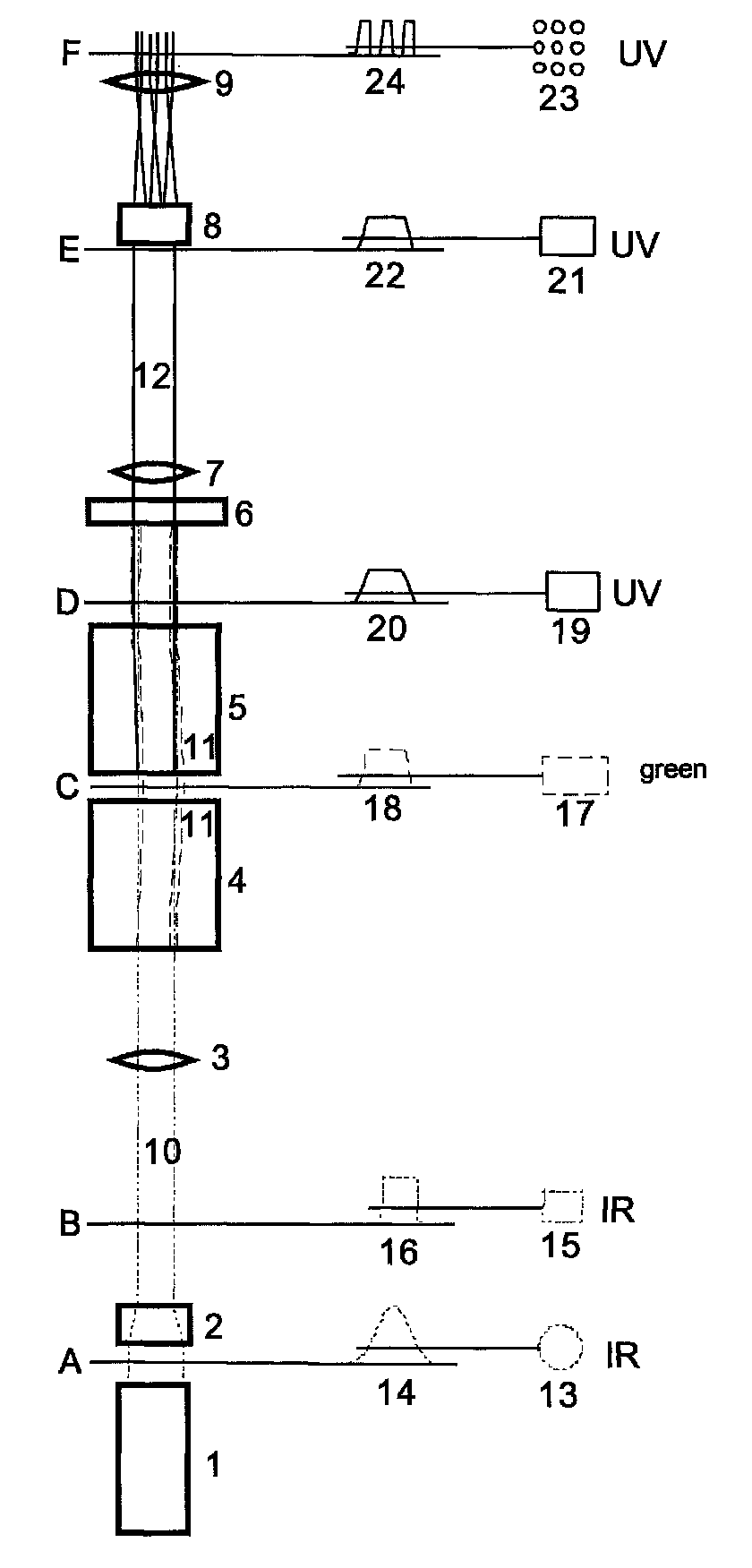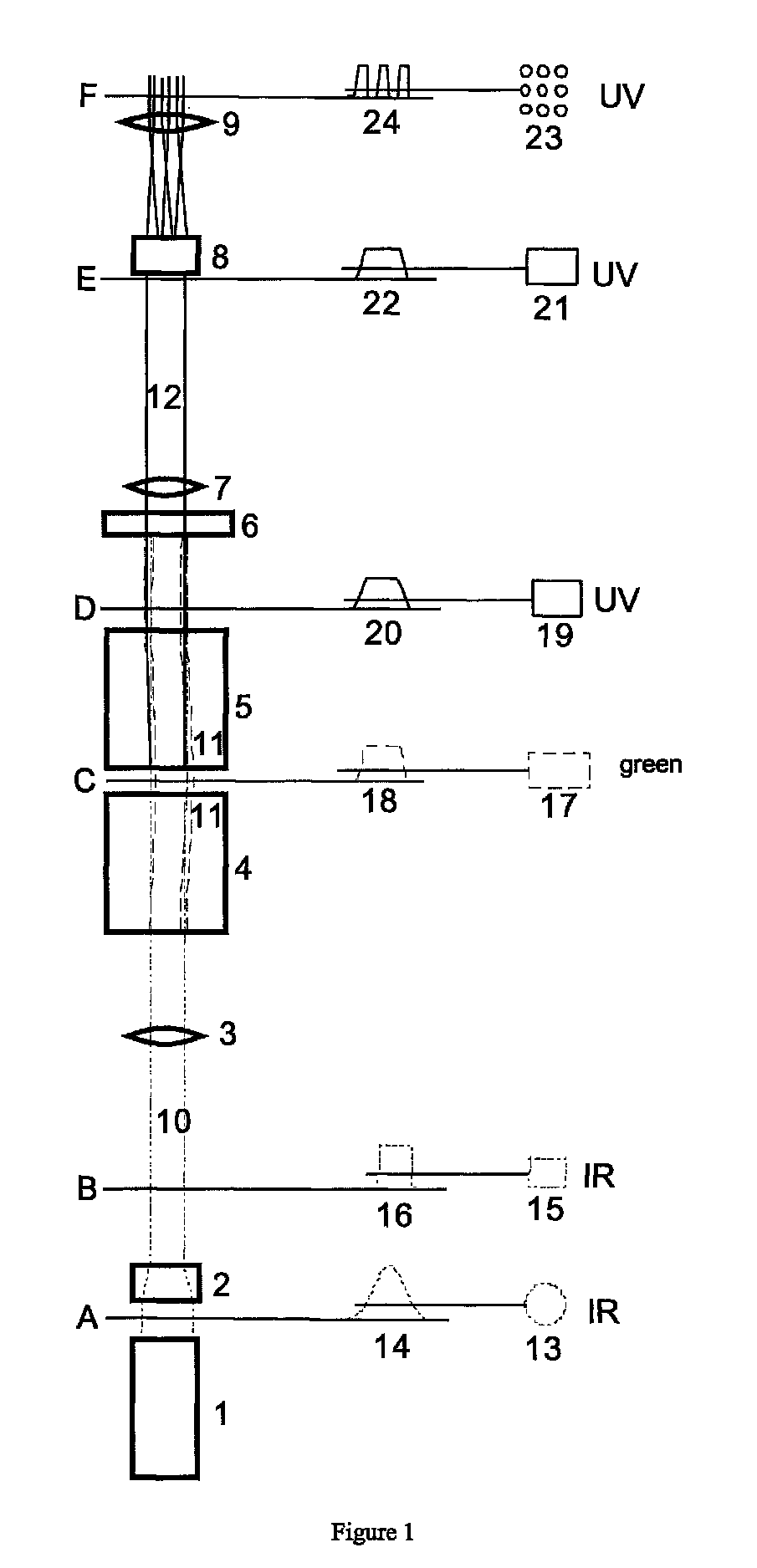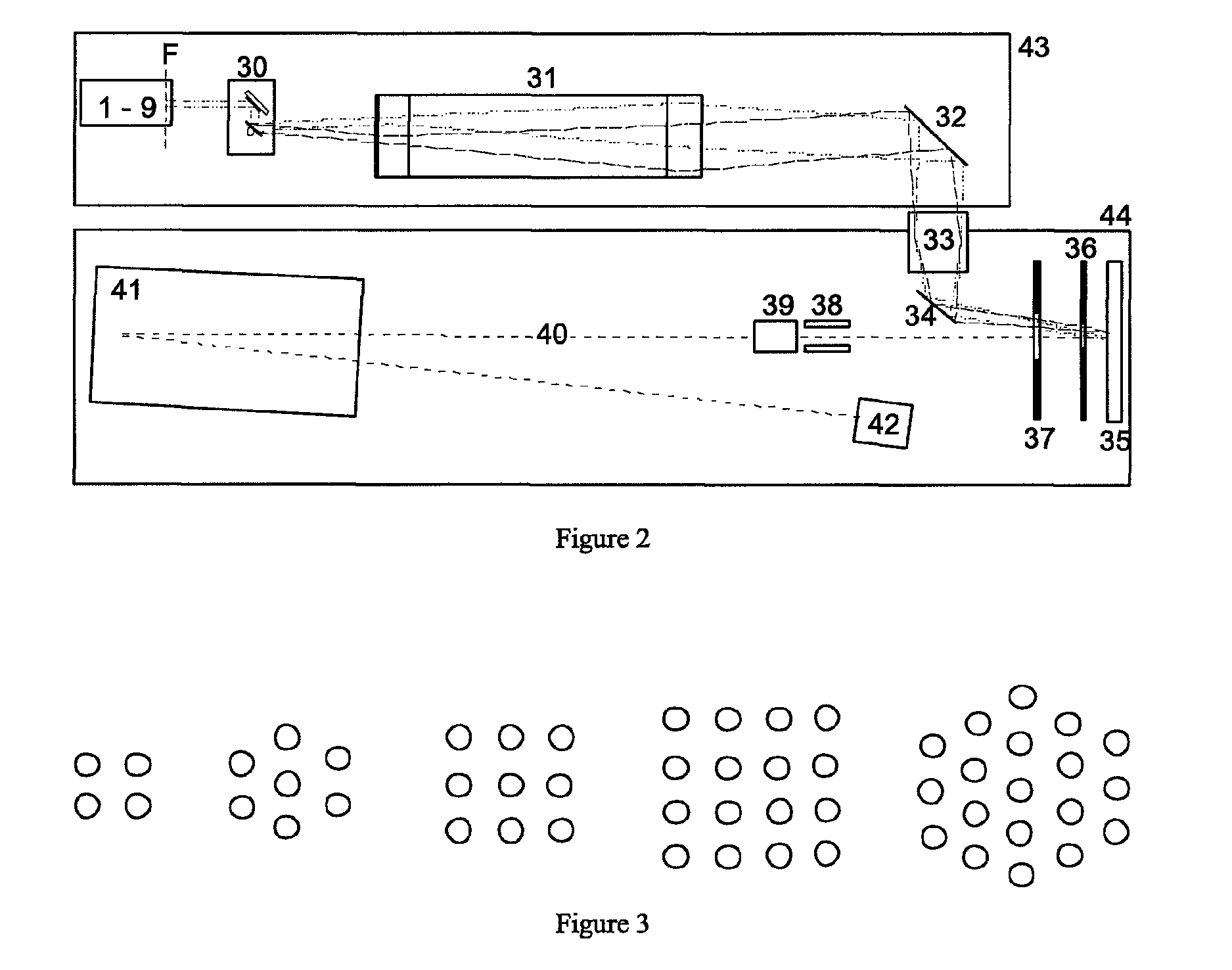Mass spectrometer with MALDI laser system
a laser system and mass spectrometer technology, applied in semiconductor lasers, separation processes, instruments, etc., can solve the problems of simultaneous increase in the number of “metastable” ions, unable to achieve the effect of ionization degree, and hopelessly oversaturating the ion detector system, etc., to achieve the effect of increasing the lifetime of the conversion crystal, significantly less cost, and increasing the conversion ra
- Summary
- Abstract
- Description
- Claims
- Application Information
AI Technical Summary
Benefits of technology
Problems solved by technology
Method used
Image
Examples
Embodiment Construction
[0024]A mass spectrometer comprises a laser system with a pulsed infrared solid-state laser system 1, two conversion crystals 4 and 5 for tripling the frequency, and a pattern generator 8 in the ultraviolet laser beam. A low-cost beam-shaping optical device is located between the pulsed solid-state laser system and the conversion crystals 4 and 5. This beam-shaping optical device converts the circular infrared beam with Gaussian profile 14 into a beam 10 of approximately rectangular shape 15 with approximately the same energy density everywhere. The laser system preferably generates an infrared beam, whose frequency is tripled to supply UV light with a wavelength of between about 300 and 450 nanometers, preferably between about 330 and 370 nanometers.
[0025]The laser light beam is converted into a beam with homogeneous energy density, in order to allow homogeneous illumination of the pattern generator. That is, one consciously refrains here from generating a UV laser light beam with ...
PUM
 Login to View More
Login to View More Abstract
Description
Claims
Application Information
 Login to View More
Login to View More - R&D
- Intellectual Property
- Life Sciences
- Materials
- Tech Scout
- Unparalleled Data Quality
- Higher Quality Content
- 60% Fewer Hallucinations
Browse by: Latest US Patents, China's latest patents, Technical Efficacy Thesaurus, Application Domain, Technology Topic, Popular Technical Reports.
© 2025 PatSnap. All rights reserved.Legal|Privacy policy|Modern Slavery Act Transparency Statement|Sitemap|About US| Contact US: help@patsnap.com



